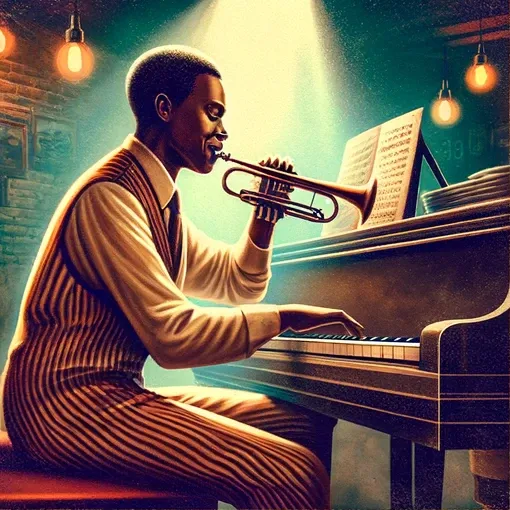Boogie-Woogie
Boogie-Woogie is a fast-paced, toe-tapping kind of music that’s heavy on the piano and light on the worries.
Table of Contents
The Origins of Boogie-Woogie
Like many great American genres, Boogie-Woogie was born out of the African American experience.
The music got its start in the late 19th century, usually credited to the lumber and turpentine camps of the Southern United States. Workers would gather ’round the piano after hours to let off steam and create a sort of musical joy that was a far cry from their day-to-day hardships.
It later found its way to Chicago, where it was honed, refined, and – most importantly – recorded!
The Musical Style
What sets Boogie-Woogie apart from other types of music is its specific focus on the piano. The left hand lays down a repetitive bass pattern, while the right hand gets all flashy with riffs and solos. This combo creates a rhythmic groove that you can feel down to your bones.
Key Artists to Know
In the Boogie-Woogie world, there are some names you just gotta know. Pioneers like Meade Lux Lewis, Albert Ammons, and Pete Johnson brought this style to prominence in the late 1930s. And don’t forget the women who made their mark, like Hadda Brooks, who brought a touch of glamour and class to the genre.
Influence and Legacy
Sure, Boogie-Woogie might seem like old-school stuff, but its fingerprints are all over modern music. From the early rock ‘n’ roll of Jerry Lee Lewis to the rhythm and blues of Fats Domino, you can hear the echoes of Boogie-Woogie all over the place. It’s also a favorite in the world of swing dancing, often played at high-energy dance events.
FAQ
What Is Boogie-Woogie?
Boogie-Woogie is a piano-driven style of blues music. It’s characterized by its repetitive bass patterns in the left hand, while the right hand adds all the flair with riffs and solos.
What Makes Boogie-Woogie Different from Other Blues Styles?
The spotlight here is on the piano! Whereas other blues styles might give more attention to vocals or other instruments, Boogie-Woogie is all about those 88 keys. It’s upbeat, fast, and a favorite for dancing.
Any Boogie-Woogie Hits I Should Check Out?
For starters, look for “Boogie Woogie Stomp” by Albert Ammons or “Honky Tonk Train Blues” by Meade Lux Lewis. These are foundational tracks that’ll get you into the Boogie-Woogie spirit quicker than you can say “shake, rattle, and roll.”
Is Boogie-Woogie Just for Old Folks?
Nah, Boogie-Woogie is for everyone! From swing dancers to modern-day musicians, people of all ages are keeping the Boogie-Woogie spirit alive.
